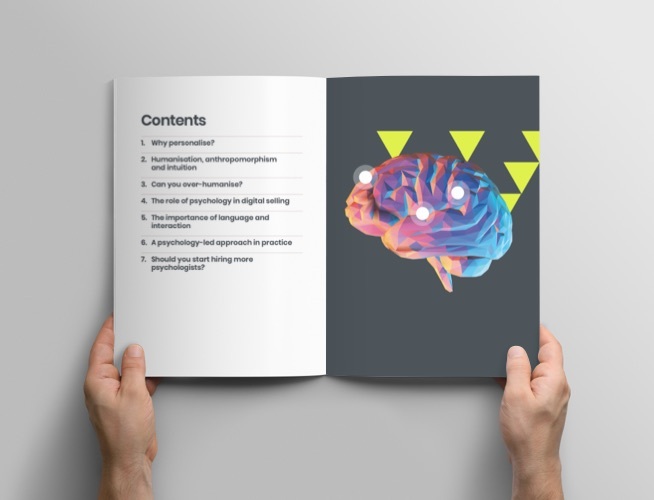Limitless choice isn’t all it’s cracked up to be. After a point, adding more options gets overwhelming. It stops us choosing at all. Or leaves us regretting the choices we make.
Potential customers experience this every time they visit a site offering a wide range of complex products – particularly in sectors such as telecoms, media or financial services. Online, they don’t have the benefit of a helpful sales consultant to assist them with their decision making, and help them get over the line.
Guided selling is the process of humanising the online buying experience to replicate an effective real world sales process. It provides customers with the support they need to arrive at a purchase choice that meets their most important buying considerations.
We study the psychology of decision making and apply these principles within the digital marketplace. Working with Sussex University and Vienna University of Economics and Business, we feed the latest consumer psychology theories into our product development – discovering the core principles that drive people to make confident choices – and bringing those qualities into the digital world through machine learning.
We’ve condensed years of detailed research into seven key guided selling psychology principles. This is the first of our series exploring those principles.
Principle 1. Right time, right message
Customers are more likely to engage if the offer of assistance aligns with their key goals and motivation. Think less ‘Hi, can I help?’ and more ‘I see you’re looking at…’.
Supporting psychology
Goal priming. A customer is only likely to act when they have an aligning goal. For example, an “Eat Popcorn” ad at the cinema will only impact hungry customers. It is necessary to understand a consumer’s motivation in order to align with their goals and gain trust.
Information Gap Theory. When people identify a gap between what they currently know, and what they would like to know, they are motivated to seek further information. To keep consumers engaged, it is necessary to identify this information, and present it at the right time.
How we apply this in the real world…
Our engine monitors each customer from the moment they land on a site – building up a set of behavioural traits. Those traits are then used to create a tailored engagement strategy – ensuring that every conversation starts with a message that aligns with each customer’s goals & motivation.
Principle 2. Conversational interaction
No two customers are the same, so you need to create conversational experiences that adapt and reflect each customer’s behaviour and tone. Once a customer starts to engage in a conversation, they are more likely to complete the process and make a sale.
Supporting psychology
Mirroring tone. Rapport can be built in a conversation by subtly mirroring aspects of the other person’s verbal behaviour and tone.
Endowment effect. The more a consumer is engaged in a sales process, the more likely they will be to finish it and buy the product.
Foot in the door technique. Once a customer has agreed to a small request, they are more likely to agree to a larger request.
How we apply this in the real world…
Adapting to each customer, the engine creates a naturally evolving conversation. It speaks everyday language, and works to build the customer’s trust and confidence. It asks a few questions to find out who they are, then tailors a journey to suit. The result is an average journey completion rate of 92%.
Principle 3. Adaptive Learning
A customer is more likely to purchase if they’ve received a personal recommendation. An in-store assistant learns and improves over time, so your digital channel needs to do exactly the same thing.
Supporting psychology
Intrinsic Motivation. When a consumer is offered products that match their personal motivation, it will increase the likelihood of a sale. Therefore, it is crucial to find a reliable way to understand each customer and discover their individual motivations.
Social learning theory. People learn through observing others’ behavior, attitudes, and outcomes. “Most human behavior is learned observationally through modeling: from observing others, one forms an idea of how new behaviors are performed.” (Bandura).
How we apply this in the real world…
We use a series of intelligent algorithms to understand a customer’s underlying preferences and behaviours. We then cluster them with similar and known customers, allowing us to present products with the highest conversion rate with like-minded customers.



